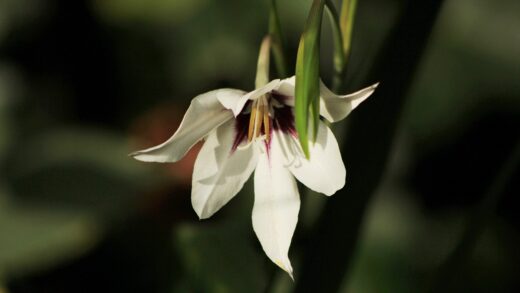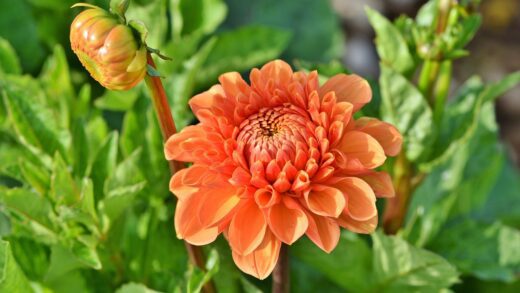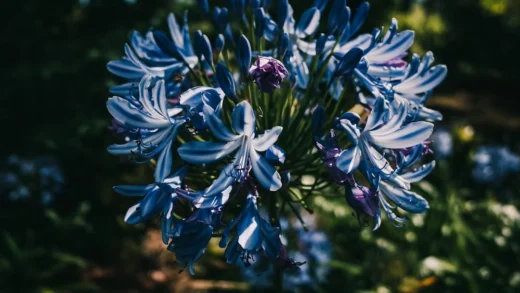Biting stonecrop is an exceptionally cold-hardy perennial, renowned for its ability to withstand harsh winter conditions with remarkable ease. Typically rated for USDA hardiness zones 3 through 9, it can survive freezing temperatures and snow cover without any special protection, making its overwintering process largely self-sufficient. This resilience is rooted in its natural life cycle, where it enters a period of dormancy as temperatures drop, conserving energy in its root system to fuel vigorous new growth in the spring. Understanding this natural process allows gardeners to provide the minimal support it needs to emerge healthy and strong after the winter months.
The key to successful overwintering for biting stonecrop lies not in insulating it from the cold, but in protecting it from excessive moisture, which is its greatest adversary at any time of year. Winter conditions, with their cycles of freezing and thawing, combined with rain or melting snow, can create the perpetually wet soil that is fatal to this succulent. Therefore, the most critical aspect of winter preparation is to ensure the plant is situated in a location with impeccable drainage, where water can never pool around its roots and crown.
During the autumn, the plant will naturally begin to prepare for dormancy. Its growth will slow, and the foliage may change color, often taking on bronze, reddish, or purplish hues. This is a normal physiological response to the colder temperatures and shorter daylight hours and is not a sign of distress. This winter coloration can add a unique and attractive dimension to the dormant garden landscape.
This article will provide a comprehensive guide to overwintering biting stonecrop, both for plants grown in garden beds and those in containers. We will cover the simple preparatory steps to take in the autumn, how to manage plants in different settings throughout the winter, and the essential care required in early spring to ensure the plant awakens from dormancy and begins its new growth cycle with vigor.
Natural hardiness and winter preparation
The inherent cold tolerance of biting stonecrop is one of its most valuable attributes as a garden plant. It does not require the elaborate winter protection that more tender perennials need, such as heavy mulching or wrapping in burlap. In fact, applying a thick layer of organic mulch, like wood chips or straw, can be detrimental. Such mulches trap moisture against the plant’s crown and prevent the soil from drying out, creating a perfect environment for rot to set in during the damp winter months.
The best winter preparation for in-ground plants is simply to ensure the area is clean and well-drained heading into the autumn. In late fall, after the first few light frosts, you can lightly rake away any fallen leaves or other debris that has accumulated on top of the stonecrop mat. This simple cleanup improves air circulation and prevents a thick, wet layer of decaying organic matter from sitting on the plants all winter, which could promote fungal diseases.
Beyond this basic tidying, no further action is generally needed. The plant’s own foliage and the natural snow cover will provide all the insulation it requires. Snow is particularly beneficial, as it acts as a lightweight, breathable blanket that protects the plant from harsh, drying winter winds and helps to regulate the soil temperature, preventing damage from rapid freeze-thaw cycles. It is the combination of cold and wet, not the cold itself, that poses the biggest threat.
It is also important to cease all supplemental watering and fertilization well before the first frost is expected. Fertilizing late in the season can encourage a flush of tender new growth that will not have time to harden off before the cold weather arrives, making it highly susceptible to frost damage. Allowing the plant to naturally slow down and enter dormancy is the best way to prepare it for the challenges of winter.
Overwintering in garden beds and rockeries
Biting stonecrop planted directly in the ground, whether in a rock garden, as a border edging, or as a large-scale ground cover, is in its ideal environment for overwintering. The earth provides excellent insulation for the root system, protecting it from the most extreme temperature fluctuations. The primary concern for these plants is ensuring that the site does not become a waterlogged basin during winter thaws or rainy periods.
If your stonecrop is planted on a slope, in a raised bed, or in a naturally gravelly or sandy soil, you have already provided the perfect conditions for winter survival. These locations allow excess water from melting snow and winter rains to drain away quickly, keeping the crown and roots relatively dry. In these ideal sites, overwintering is a completely passive process; the plant will take care of itself without any intervention.
In areas with heavier soil, winter can be more challenging. If you notice that water tends to pool in the area where your stonecrop is planted, it may be a sign that the drainage is inadequate. While this is best addressed at the time of planting, you can take some corrective measures in the autumn. For instance, you could carefully dig a shallow channel or swale nearby to help divert excess surface water away from the planting bed during periods of heavy rain or melt.
During the winter, you may notice the plant’s foliage dying back or looking somewhat sparse and discolored. This is a perfectly normal part of its dormancy. The plant is not dead; it is simply resting. Resist the temptation to “tidy up” by cutting it back hard in the middle of winter. The existing top growth, even if it looks dormant, provides some measure of protection to the crown and roots from wind and ice.
Caring for potted stonecrop during winter
Overwintering biting stonecrop in containers requires a bit more attention than for plants in the ground because the root system is more exposed to the cold. The soil in a pot will freeze much faster and more solidly than the ground, which can put stress on the roots. However, the primary danger, as always, is not the cold itself but the combination of cold and wet soil. A waterlogged, frozen pot can easily kill the plant.
To successfully overwinter potted stonecrop in cold climates, the first step is to stop watering completely once the weather turns consistently cold. Move the container to a location where it will be sheltered from excessive winter rain and snow. Placing it under the eaves of a house, on a covered porch, or in an unheated garage or shed are all excellent options. The goal is to keep the soil dry throughout the winter.
While sheltering the pot is important, do not bring it into a warm, heated indoor space. The plant needs to experience a cold dormant period to reset its biological clock for the spring growth cycle. Bringing it indoors into a warm environment will break its dormancy, leading to weak, inappropriate growth and potentially exhausting the plant. A cold but sheltered location is the ideal compromise.
For those in very harsh climates (USDA zones 3-4), where temperatures plummet for extended periods, an extra layer of protection for the roots may be beneficial. You can “heel in” the pot by sinking it into an empty garden bed and covering it with soil up to the rim. Alternatively, you can place the pot inside a larger container and fill the gap between the two with insulating material like straw or leaves. This helps to buffer the roots from the most extreme temperature swings.
Post-winter revival and spring care
As winter begins to recede and the first signs of spring appear, your biting stonecrop will start to awaken from its dormancy. This is a critical time to provide some basic care to ensure it gets off to a healthy start for the new growing season. The first step is to assess the plant for any damage that may have occurred over the winter. You may see some brown, mushy, or desiccated stems.
Once the threat of hard frost has passed, it is time for a spring cleanup. Using your fingers or a small rake, gently clear away any dead foliage and debris from the plant mat. You can trim off any dead or damaged stems with a pair of small scissors or shears. This cleanup not only improves the plant’s appearance but also increases air circulation to the crown, which helps to prevent fungal issues as the weather becomes warmer and wetter.
For potted plants that were moved to a sheltered location, you can bring them back out into their sunny spot as the temperatures begin to consistently stay above freezing. This is also the time to provide their first watering of the season. Give the soil a thorough soaking to rehydrate the roots, and then allow it to dry out again before the next watering, resuming your normal warm-season irrigation routine.
You may notice that some sections of the plant have been heaved out of the ground by frost action. Gently press these sections back into firm contact with the soil. They will quickly send out new roots and re-establish themselves. This is also an excellent time to fill in any bare patches. You can simply take small cuttings or divisions from a dense area of the clump and press them into the bare soil, and they will readily take root and fill in the space.

















